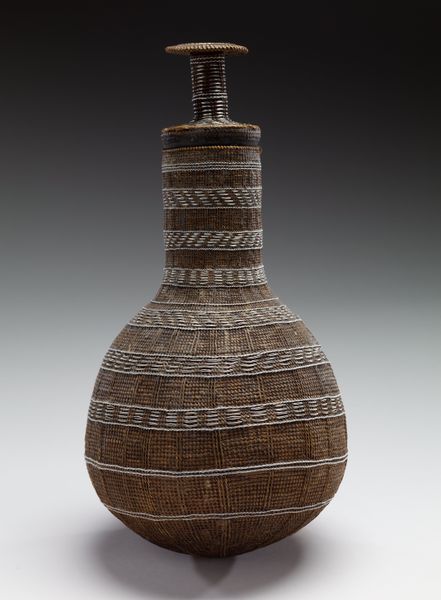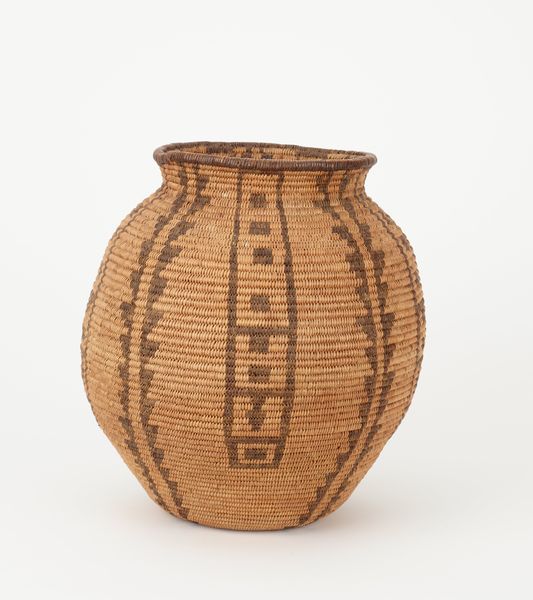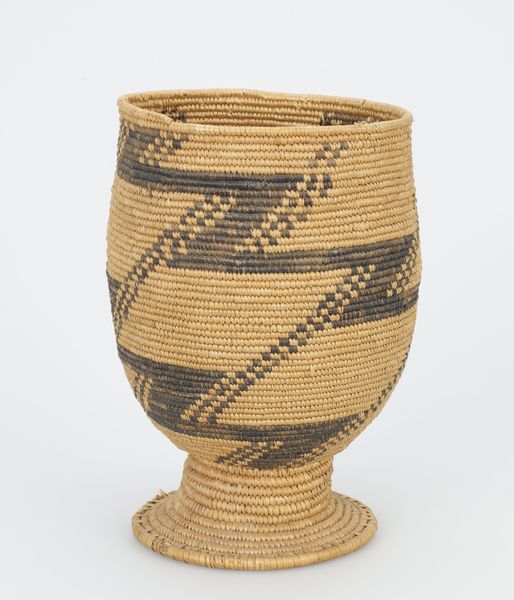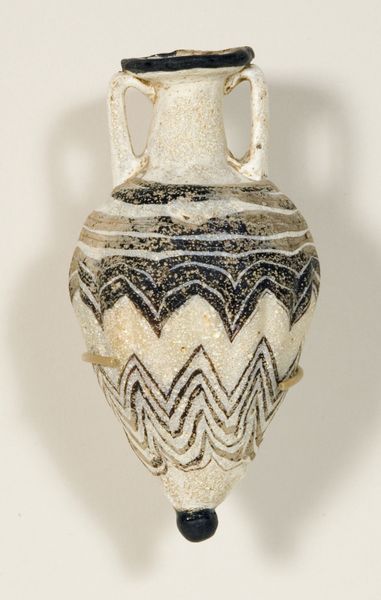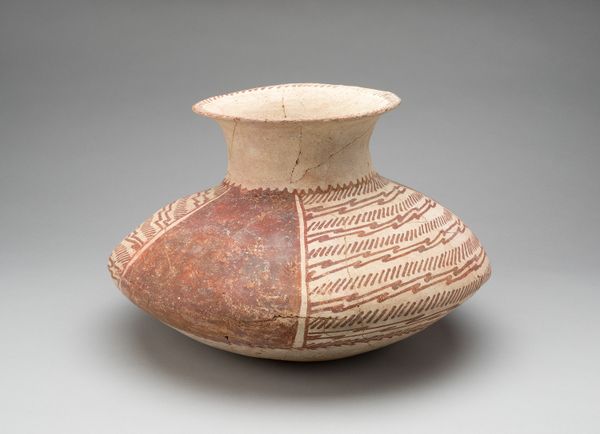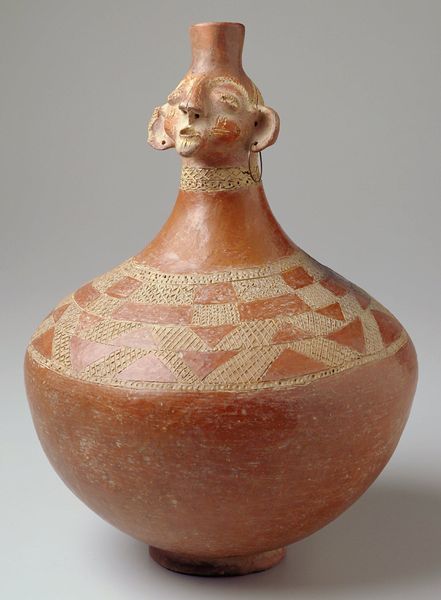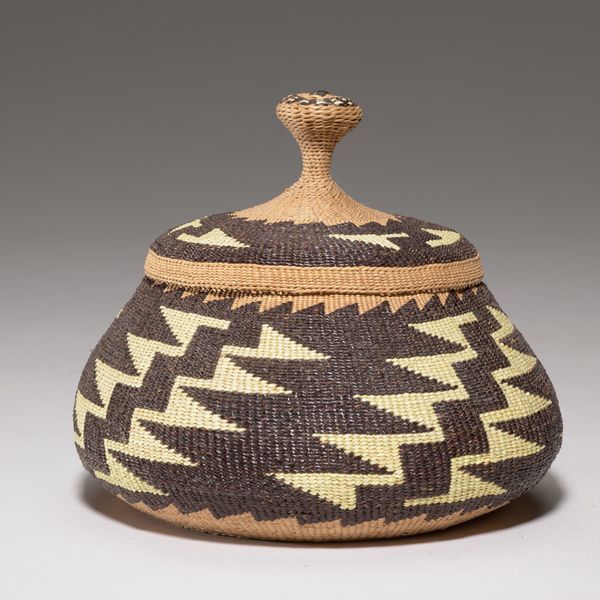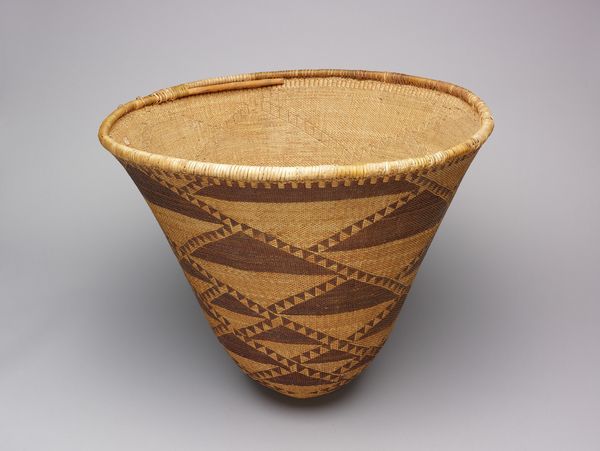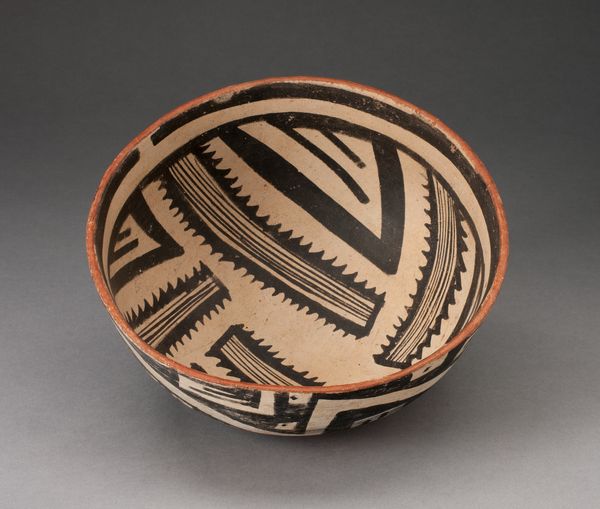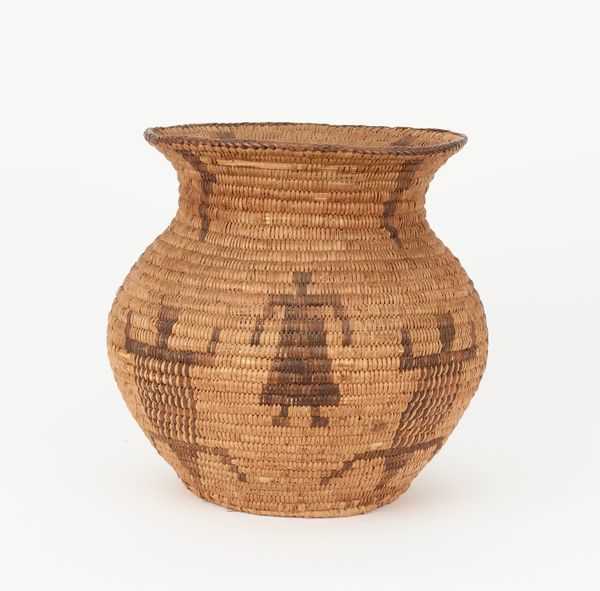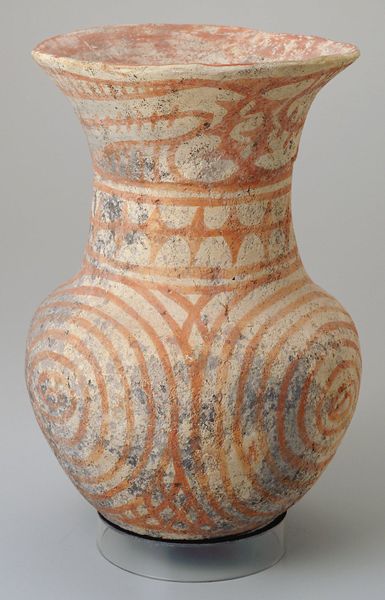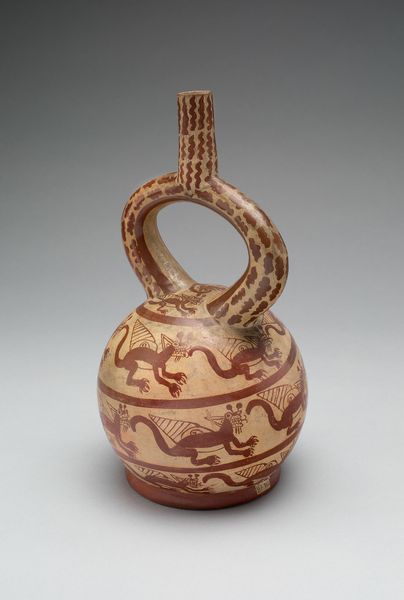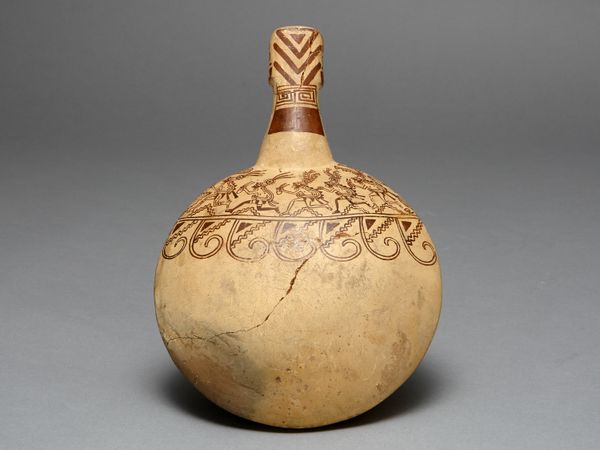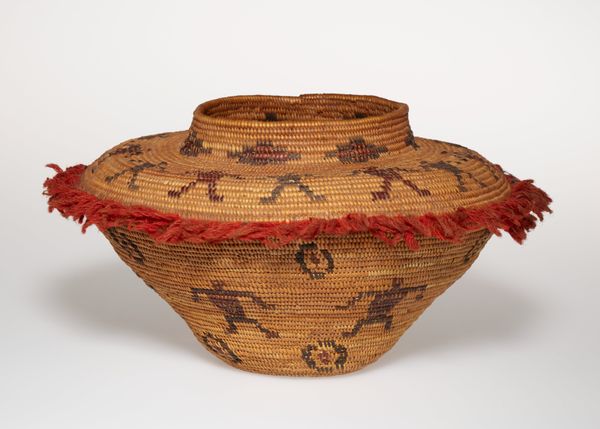
fibre-art, weaving, textile
#
fibre-art
#
naturalistic pattern
#
organic
#
weaving
#
textile
#
organic pattern
#
pattern repetition
#
decorative-art
#
indigenous-americas
Dimensions: 14 1/8 × 9 1/2 × 9 1/2 in. (35.88 × 24.13 × 24.13 cm)
Copyright: Public Domain
This watertight water jar, made by Paiute artists, is a beautiful object crafted with natural fibres. The weaving is so fine, so consistent – it speaks to the maker’s deep understanding of material and technique. It's not just about skill, it's about process, each coil building on the last, a slow accumulation of care and attention. Look closely, you can see the subtle variations in color, the way the light catches the surface. The texture is incredible, I can almost feel the give of the fibers. And notice the marks, the slight imperfections that reveal the hand of the artist. There's a kind of beauty in the asymmetry of the object as a whole, the way it leans and curves, a bit like some of Eva Hesse's rope sculptures. Thinking about this jar makes me think about all the objects we surround ourselves with, the things we take for granted. It’s a reminder that everything has a history, a story, a process behind it.
Comments
minneapolisinstituteofart almost 2 years ago
⋮
For thousands of years, Native people have lived in the dry deserts of the North American Southwest, where summer temperatures can reach 130 degrees Fahrenheit. Indeed, the Apache and Tohono O’odham, among other Native peoples, still thrive there. Indigenous knowledge of their environment historically helped them travel great distances with little water to collect certain plants and animals. They still make gathering baskets from local plant fibers, adorned with objects that create pleasing sounds when the baskets are used, Baskets woven so tightly they can store water are both utilitarian and artful, embellished with patterns.
Join the conversation
Join millions of artists and users on Artera today and experience the ultimate creative platform.
